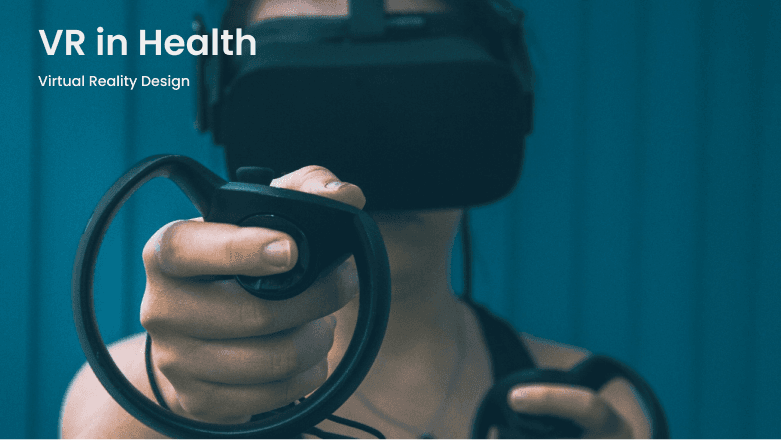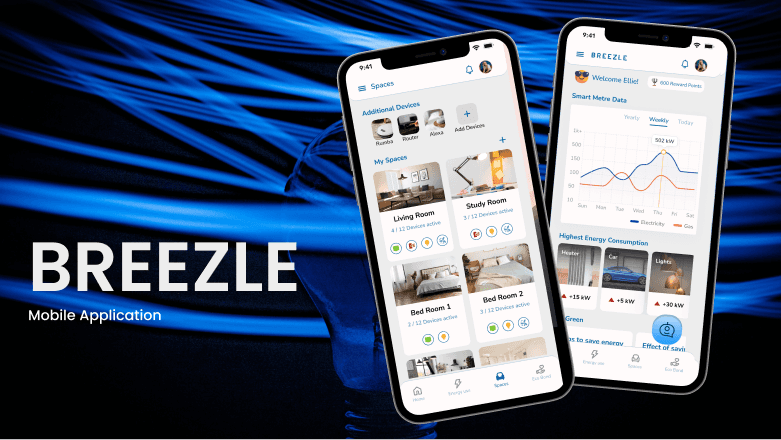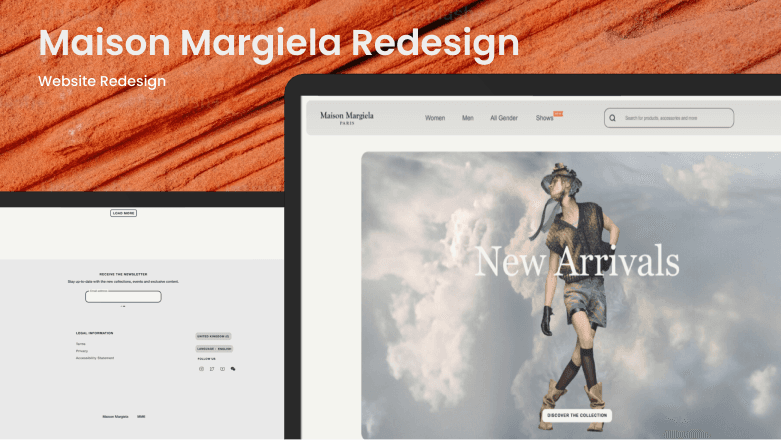VR: Enhancing Caregiver’s Sensitivity to Pain in Dementia Patients.
Advanced Interaction Design for Virtual Reality in the Health Sector
Group Members

Project Overview
"The project aimed to design a VR experience addressing UN Goal 3 - 'Ensure healthy lives and promote well-being for all at all ages,' tailored for the UK general public with minimal AR/VR exposure. It sought to challenge misconceptions and stimulate behaviour change. Additionally, the project aimed to utilise design patterns suitable for immersive interactions within XR."
UN Sustainability Goal

Ensure healthy lives and promote well-being for all at all ages
3.c. Target: Substantially increase health financing and the recruitment, development, training and retention of the health workforce in developing countries, especially in least developed countries and small island developing States
3.c.1 Indicators: Health worker density and distribution
Objective
The aim to choose UN goal 3 was because of the critical importance in addressing global healthcare challenges. Our focus stemmed from recognising a significant issue in healthcare systems worldwide: the shortage of trained professionals, which narrowed down to health care workers which was important part of UK’s context. Delving deeper into the problem, we identified a key area for improvement: the training and recruitment of caregivers, particularly for dementia patients. This led us to prioritise developing a solution that not only addressed this gap but also leveraged technology to enhance training effectiveness and reach among UK people but also in remote areas.
Project Prototype
Design Process

Research and Discovery
What is Dementia and why we selected it?
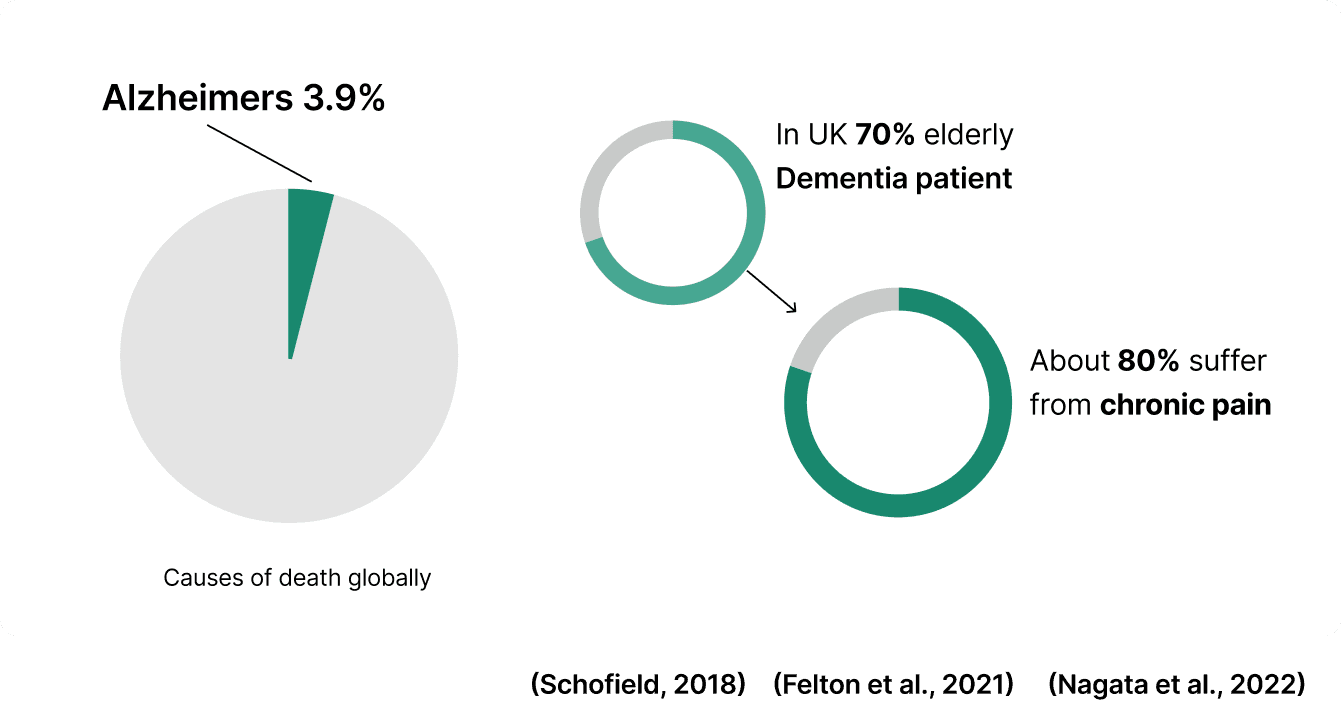
With the continuous increase in the elderly population, it is projected that the number of people over 65 in the UK will rise by 8.2 million within 50 years (Office of National Statistics, 2019), inevitably leading to an increase in the number of people with dementia. Dementia is now considered a public health issue (Yang et al., 2024).
Patients with dementia often experience chronic pain, which can significantly impact their quality of life. Research shows that untreated pain can lead to distress, impaired daily activities, reduced appetite, disrupted sleep, increased risk of falls, exacerbation of depressive symptoms, and overall decline in well-being. This underscores the importance of addressing pain management in dementia care to improve the lives of those affected.
Currently, the most reliable diagnostic approach combines clinical observations with reports from caregivers (Kaufmann et al., 2021).
Current situation in health care

The insight we got was that:
Caregivers need to accumulate long-term experience with various patient pain scenarios to accurately notice dementia patients' pain.
Existing training course covers dementia awareness but when it comes to actually working, care workers still face problems (Yang et al., 2024)
New care workers without prior hands-on training, may deliver poor service to the dementia patients due to inadequate pain recognition experience.
Target user
So, based on what we learned from the brief and our research, we decided to focus on training care workers. The idea is to give them hands-on experience with patient care, without putting real patients at risk. This kind of practical experience can really boost the confidence of care workers and make their training much more effective.
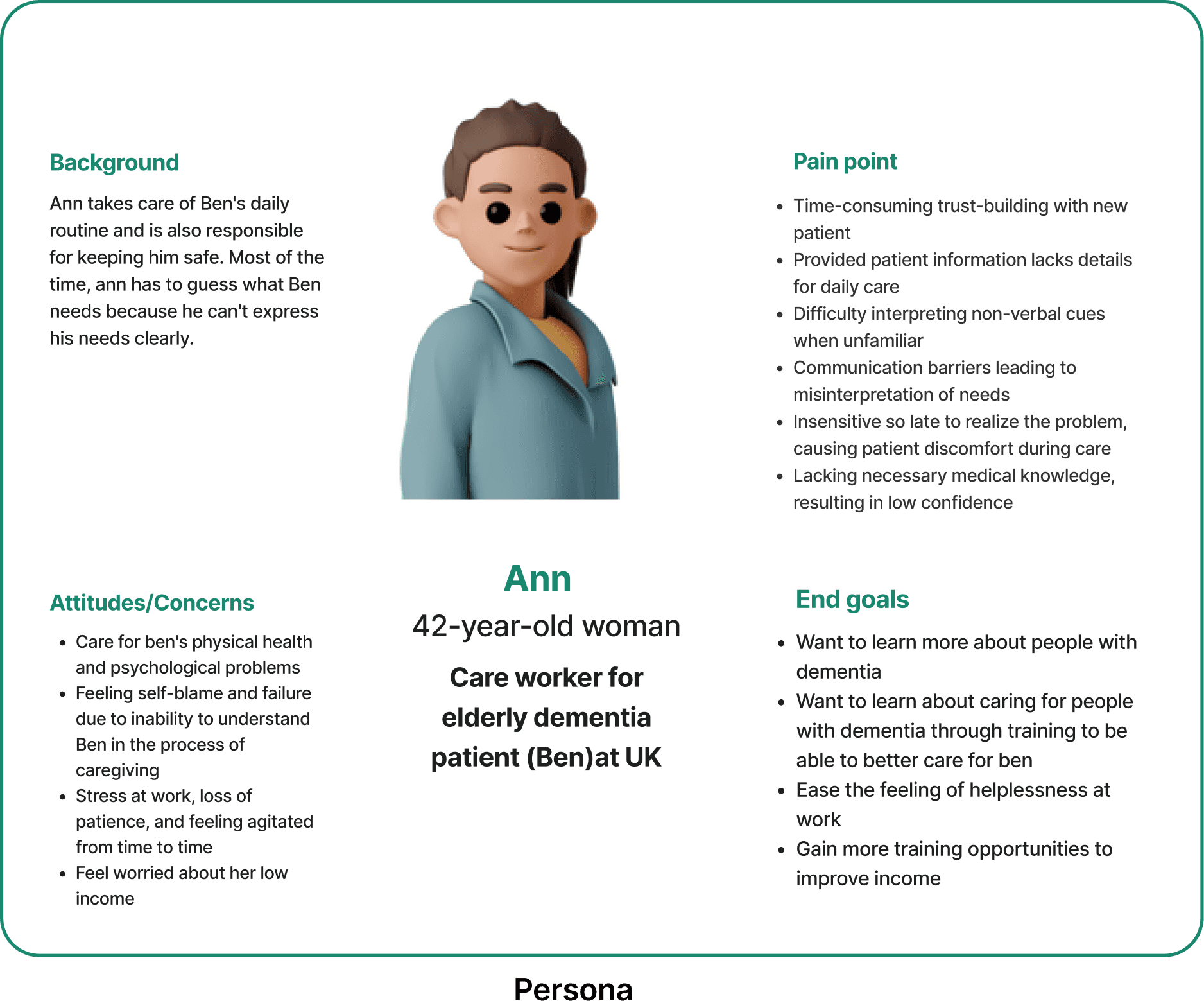
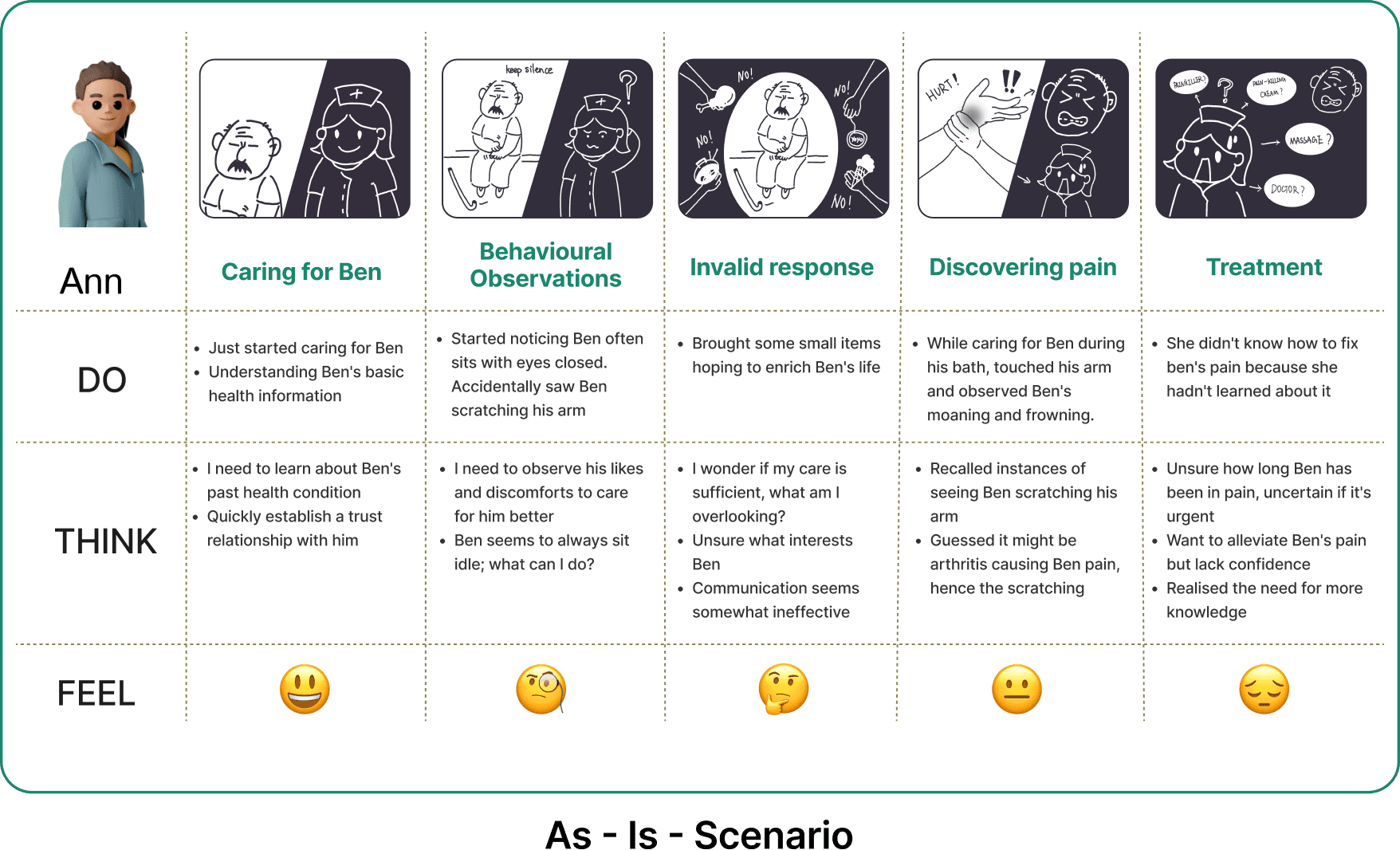
UX Vision Statement
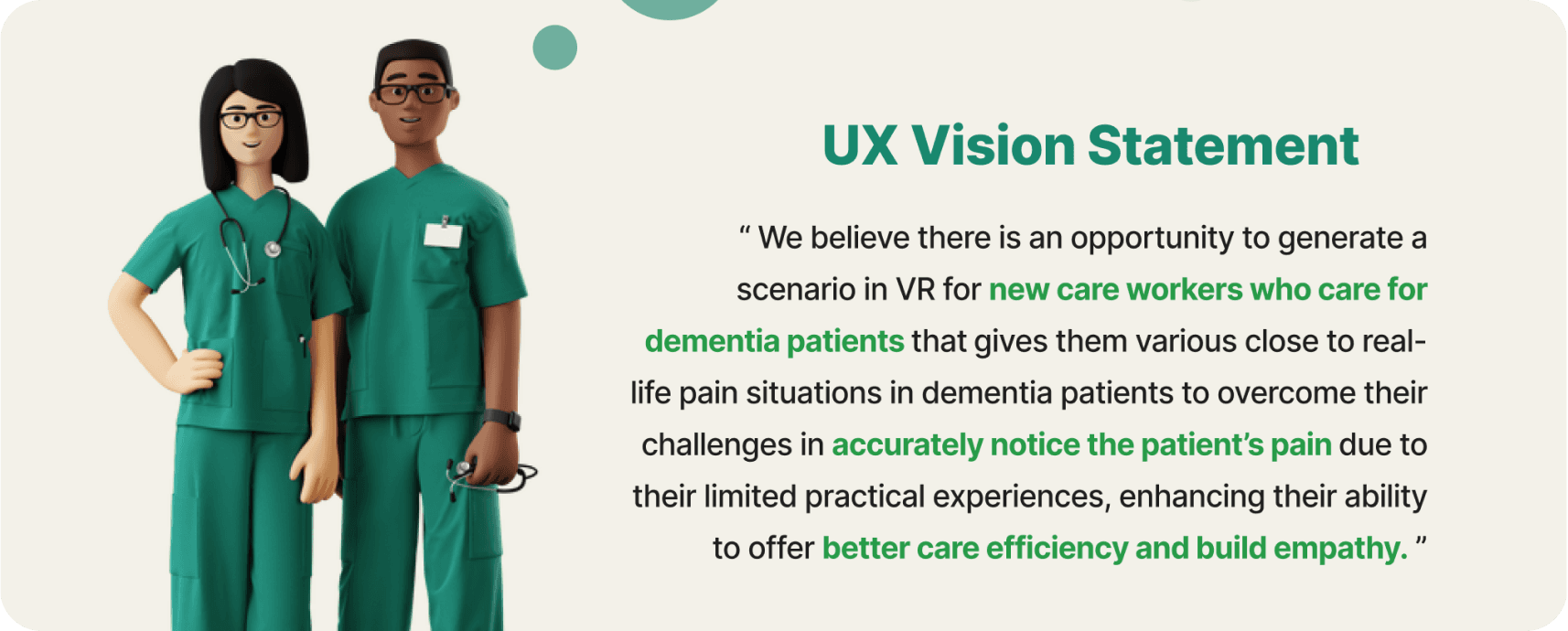
Ideation and Conceptualisation:
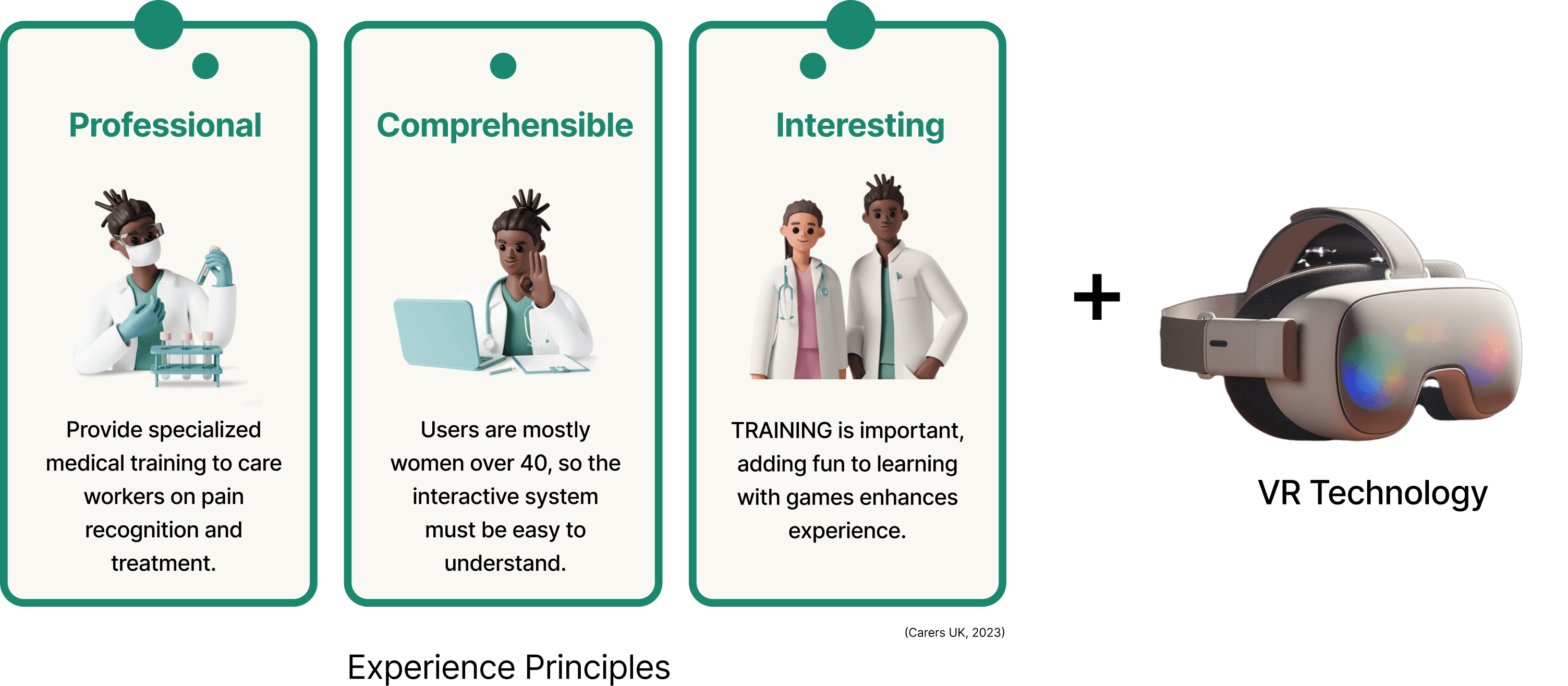
Initial ideas & evaluation
We developed different user need statements based on which 3 ideas or concepts were drafted where each idea was studies based on it’s advantages and disadvantages of wether it will work.
Option 1: Pedagogical training
The care worker acts as a student in the VR experience, with a virtual teacher teaching them about pain recognition and an exam to test their learning outcome.
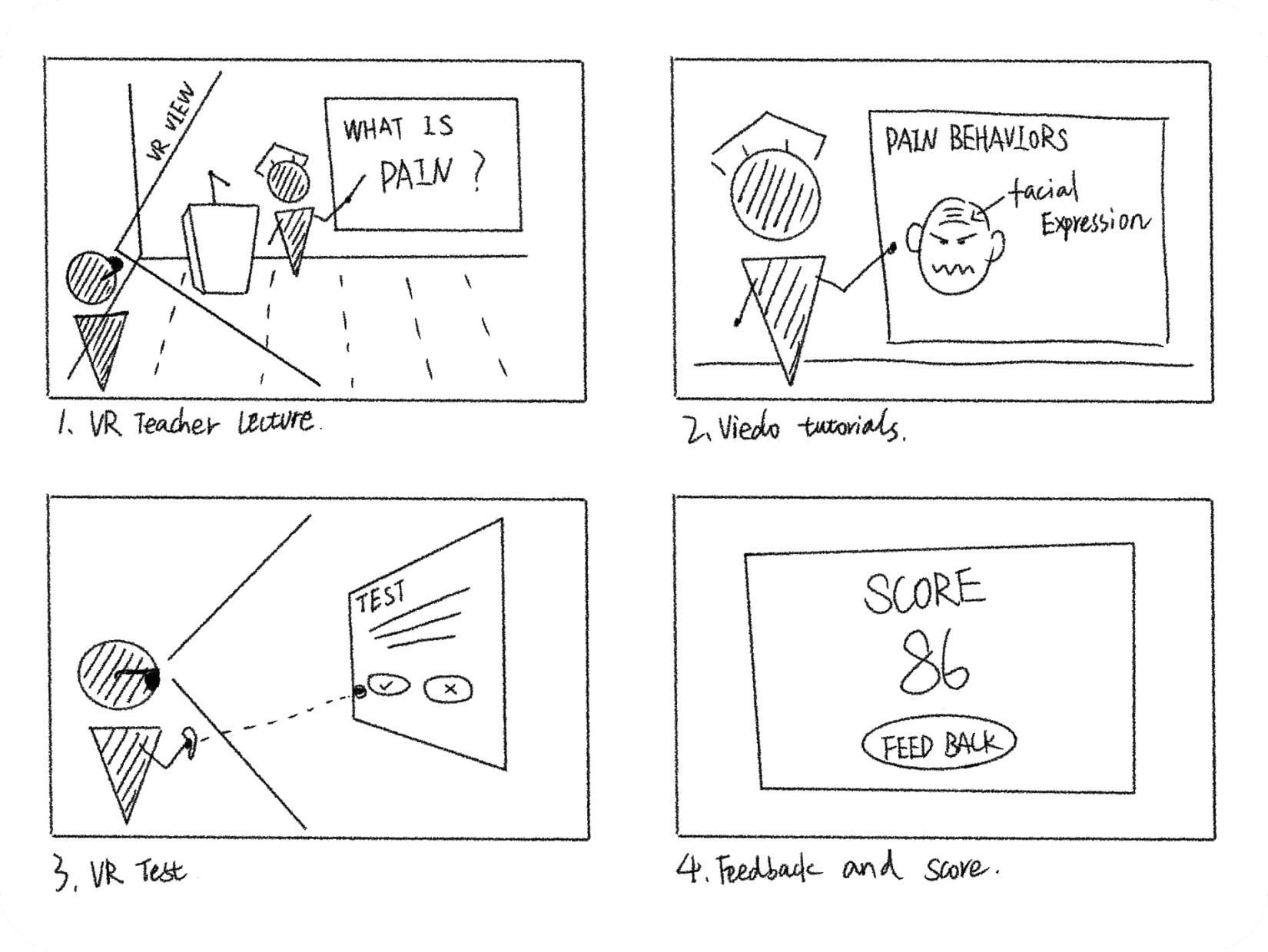
Option 2: Gaming
The care worker needs to identify the various pain behaviours of the dementia patient in the game and needs to achieve a certain level of truthfulness to move on to later learning content.

Option 3: situational reenactment
Care workers learn about the pain management model through situational reenactment, where different choices of patients respond differently.
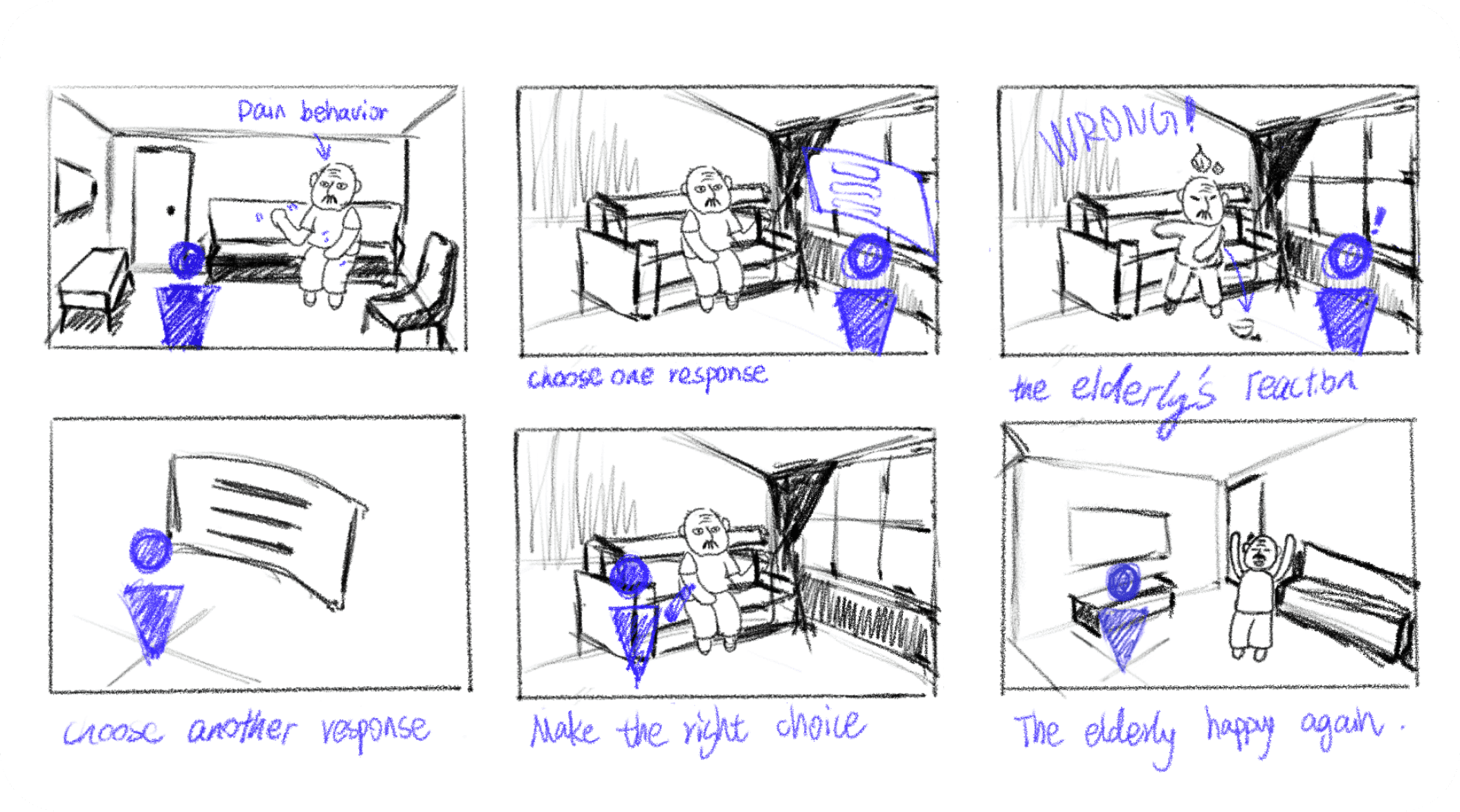
Sketching Storyboard
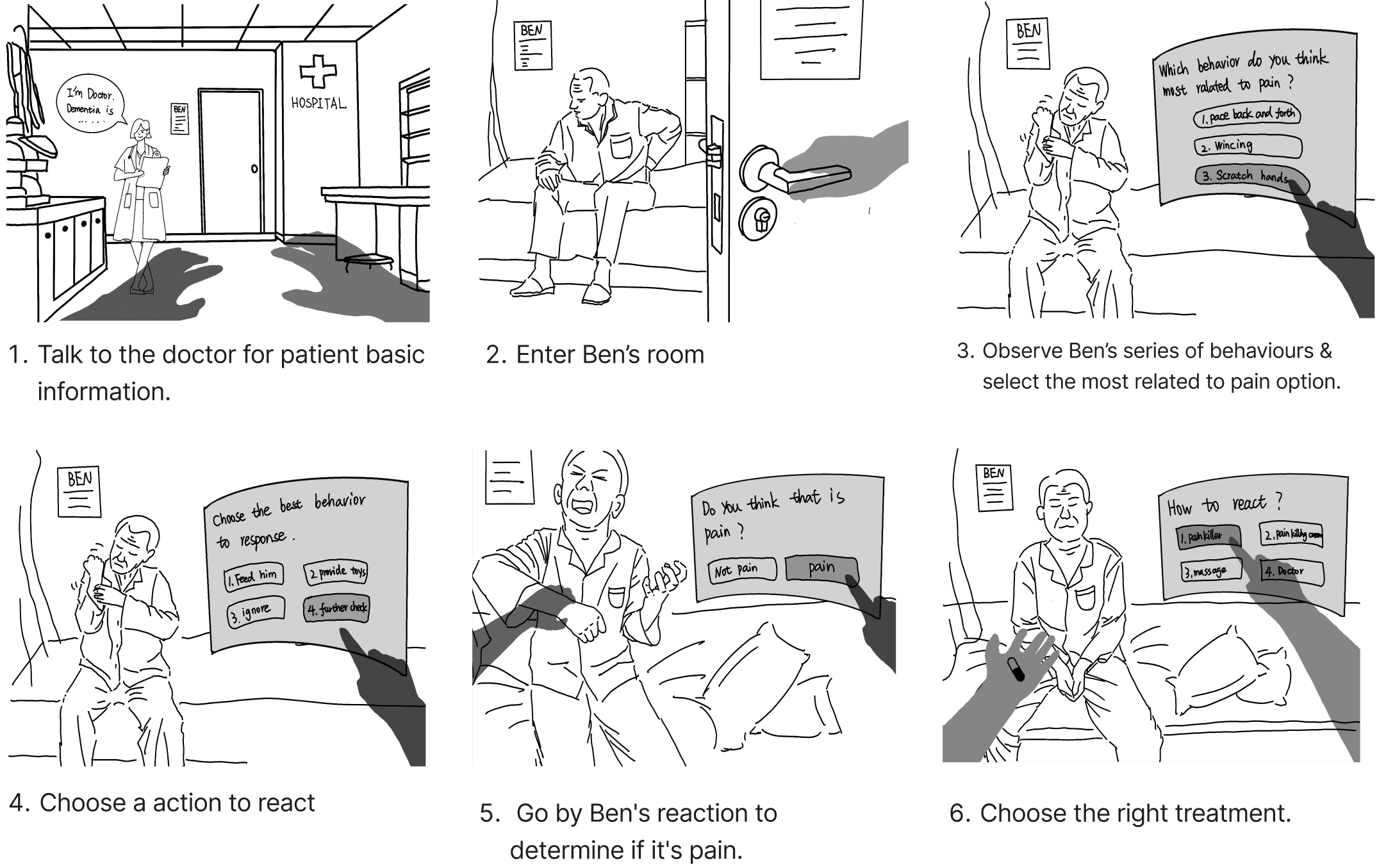
Body-storming (With team members)
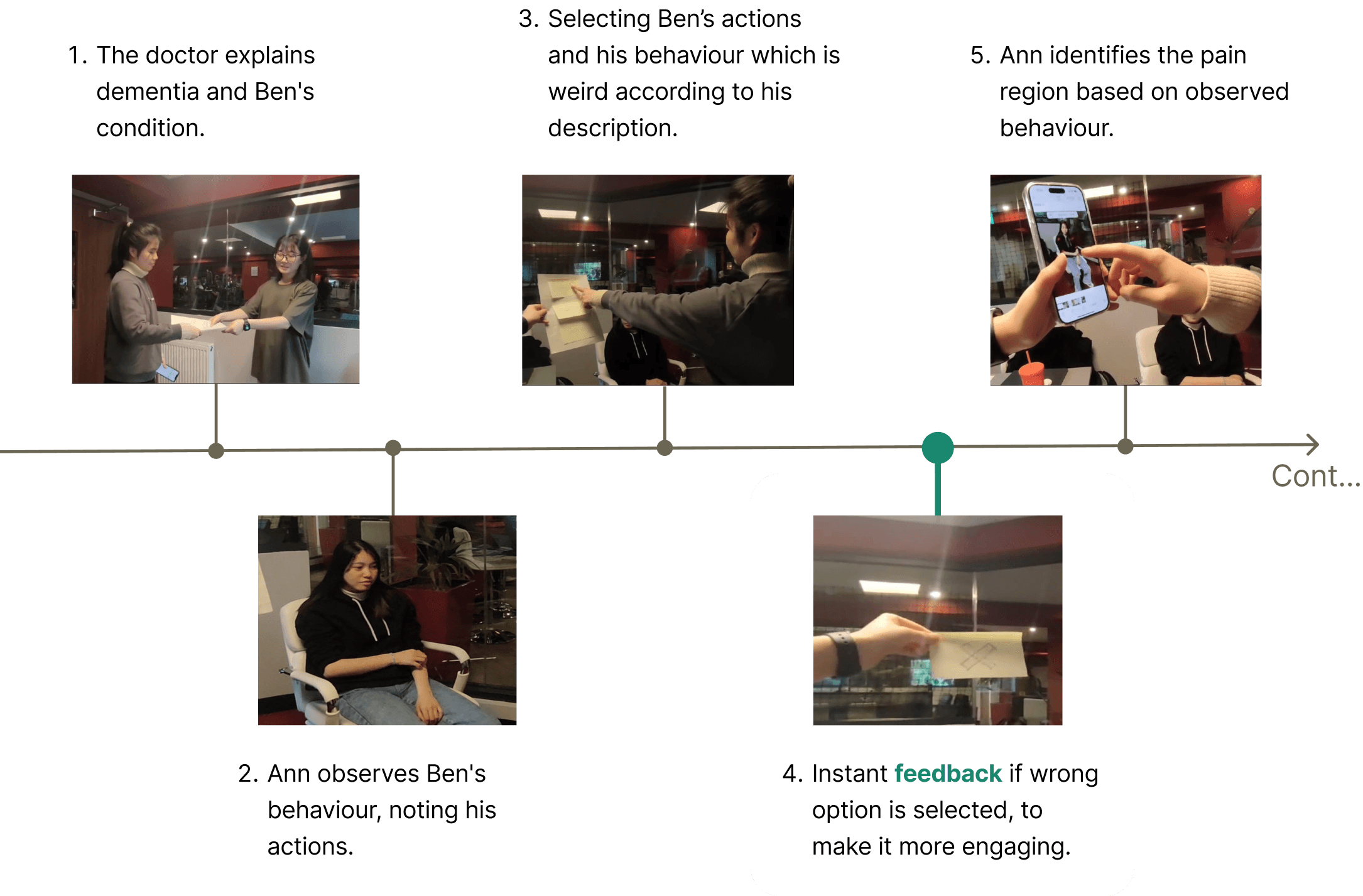

Design and Development
Cognitive Walkthrough
The walkthrough objectives focused on evaluating the game interface's comprehensibility, efficiency of completion, and overall user experience, particularly targeting middle-aged care workers. We aimed to ensure that the interface is easy to understand and operate, facilitates efficient completion of tasks related to identifying pain in dementia patients, and optimises interface efficiency through effective presentation, layout design, and interactive elements.

Emotional Flow Through the Rooms Experienced
The walkthrough objectives focused on evaluating the game interface's comprehensibility, efficiency of completion, and overall user experience, particularly targeting middle-aged care workers. We aimed to ensure that the interface is easy to understand and operate, facilitates efficient completion of tasks related to identifying pain in dementia patients, and optimises interface efficiency through effective presentation, layout design, and interactive elements.

Design Principles
During the prototype design phase, we carefully applied design principles to ensure a smooth and efficient user experience. Immersed in virtual reality, we focused on integrating human psychological principles to enhance the user's sense of presence. By incorporating these design principles, we aimed to create an engaging, intuitive, and effective VR experience, tailored specifically for caregivers working with dementia patients.
Vertical and horizontal alignment
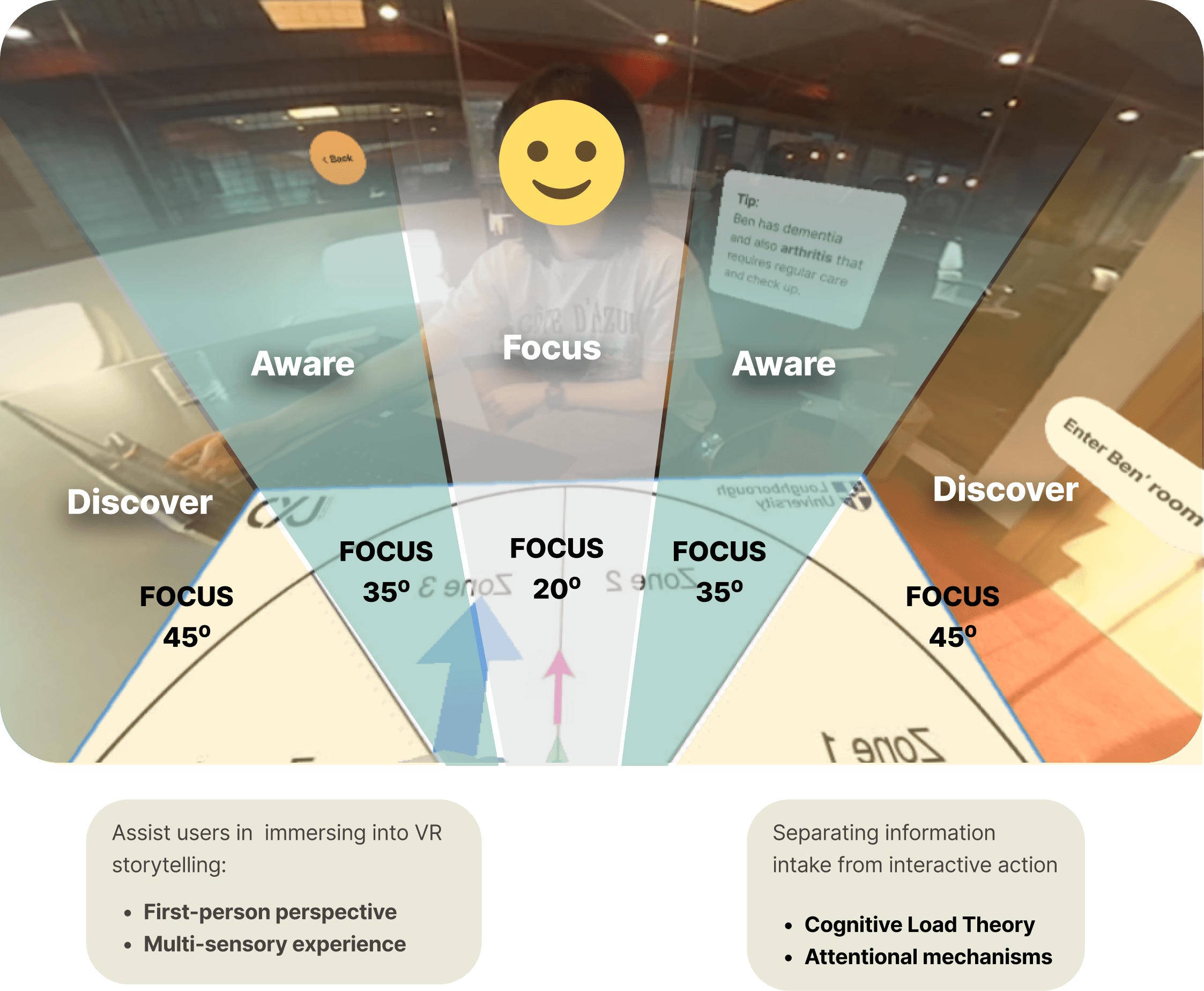
Heuristics and psychological principles applied
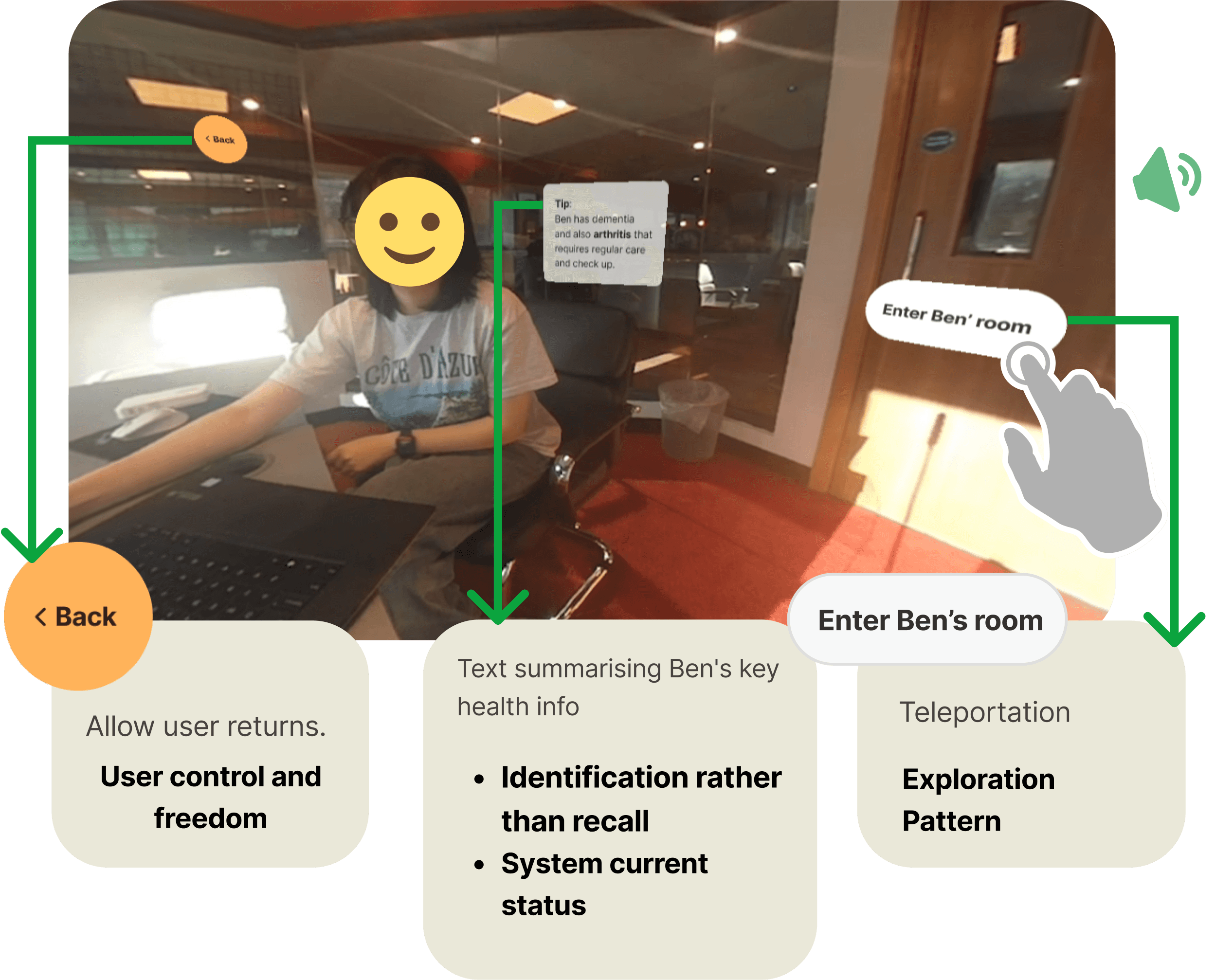
Human perception
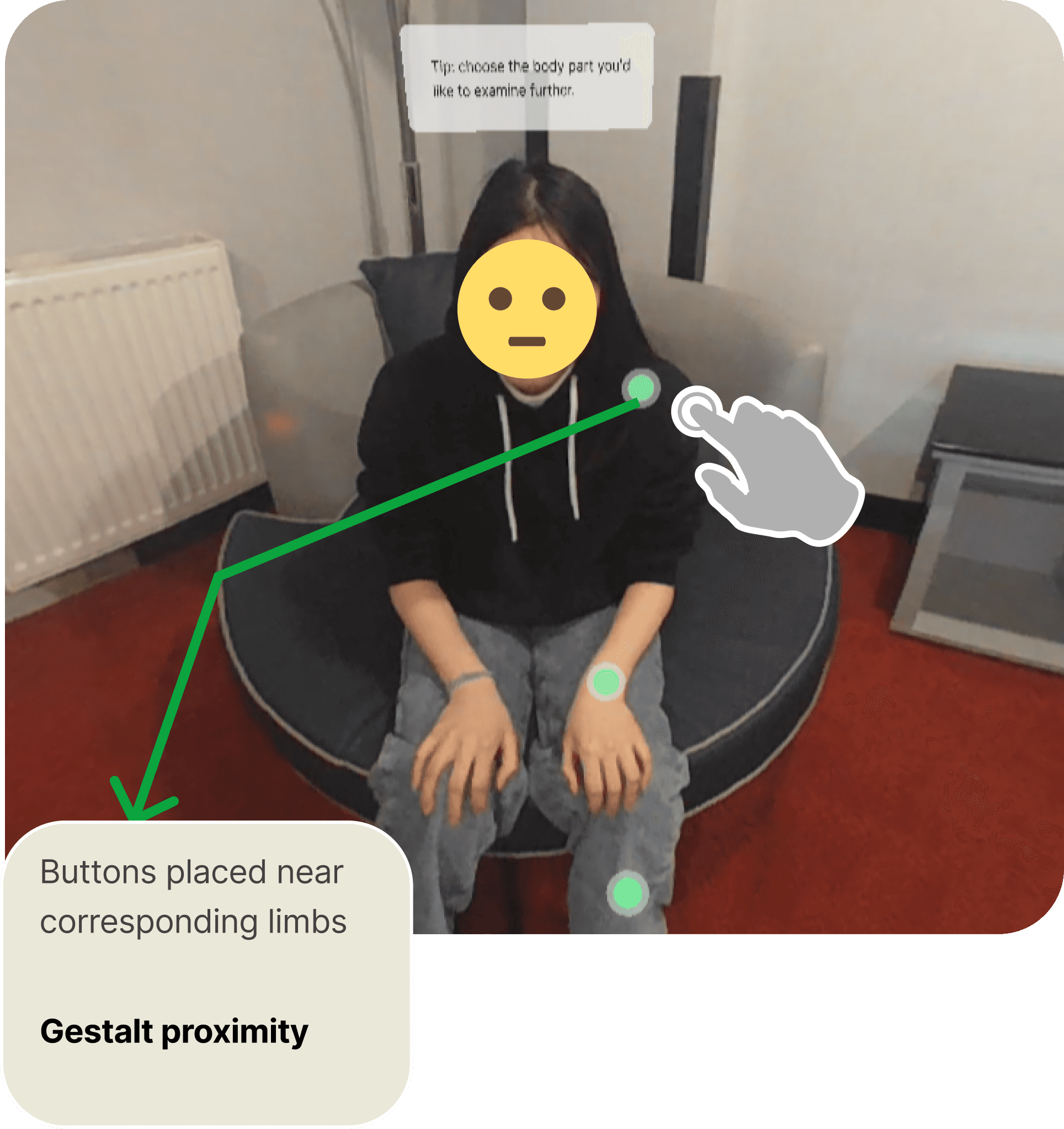
Gamification
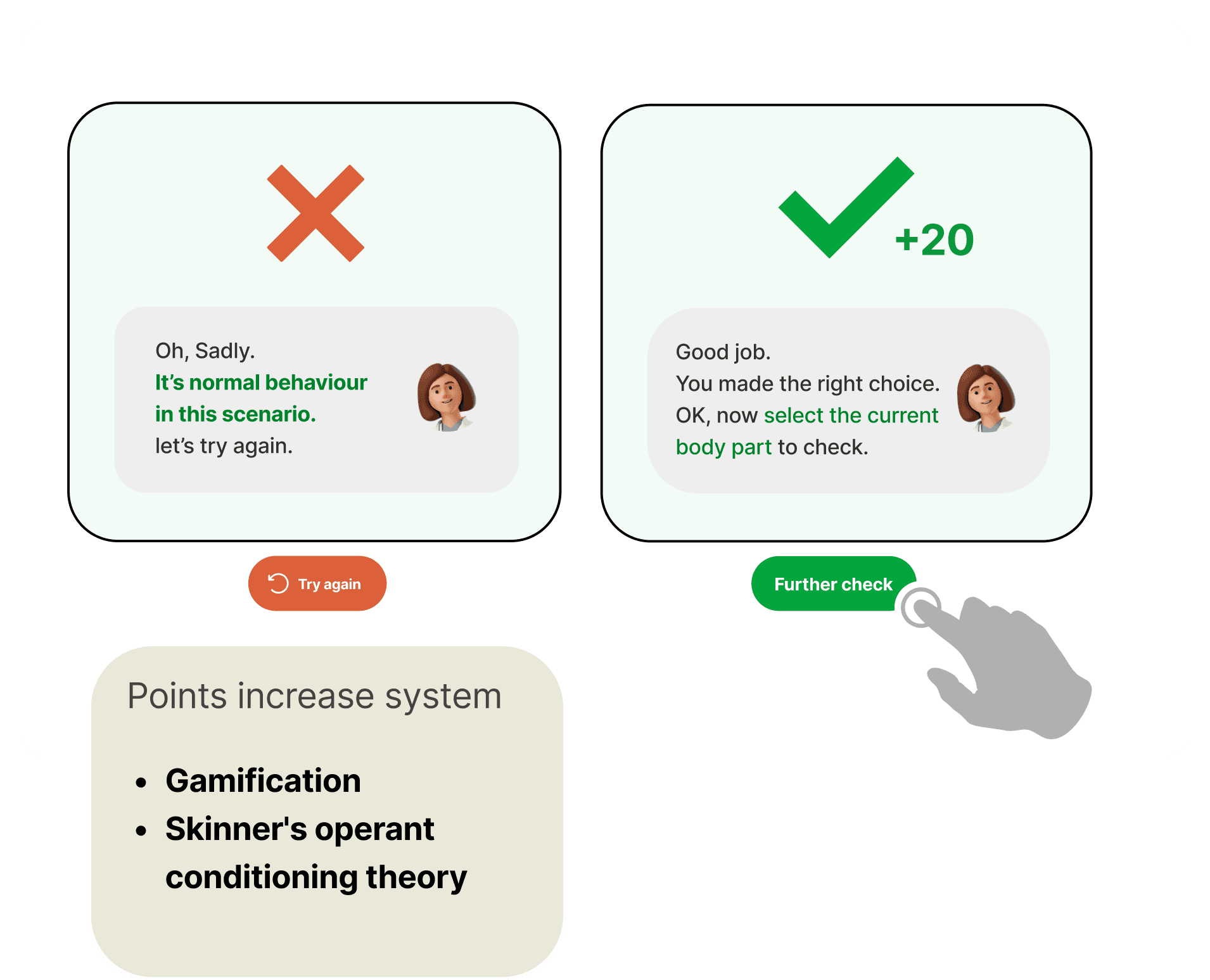
User Testing and Iterations
We conducted user testing with a group of six participants aged 25-32, some of whom had experience in elderly care but none had prior VR experience. This intentional selection allowed us to evaluate the accessibility and usability of our VR prototype among users new to VR technology, reflecting real-world scenarios where caregivers may lack VR familiarity.
Users were given three tasks to perform and instructed to use the think-aloud method while completing them in VR:
Task 1: Focus on Patient Basic Information
Task 2: Notice Pain Behaviour
Task 3: Apply Simple Treatment
Emotrak Scale
This scale was to get an overall experience of the users of performing tasks in VR. Thus we discovered that beginners benefited from learning through their mistakes, leading to a confidence boost in identifying pain behaviours. Participants appreciated clear instructions but desired more autonomy in viewing and clearer audio cues. Negative feedback highlighted issues like unclear audio, poor video quality, and limited interaction, emphasising the importance of refining these aspects for a more immersive and effective VR training experience.

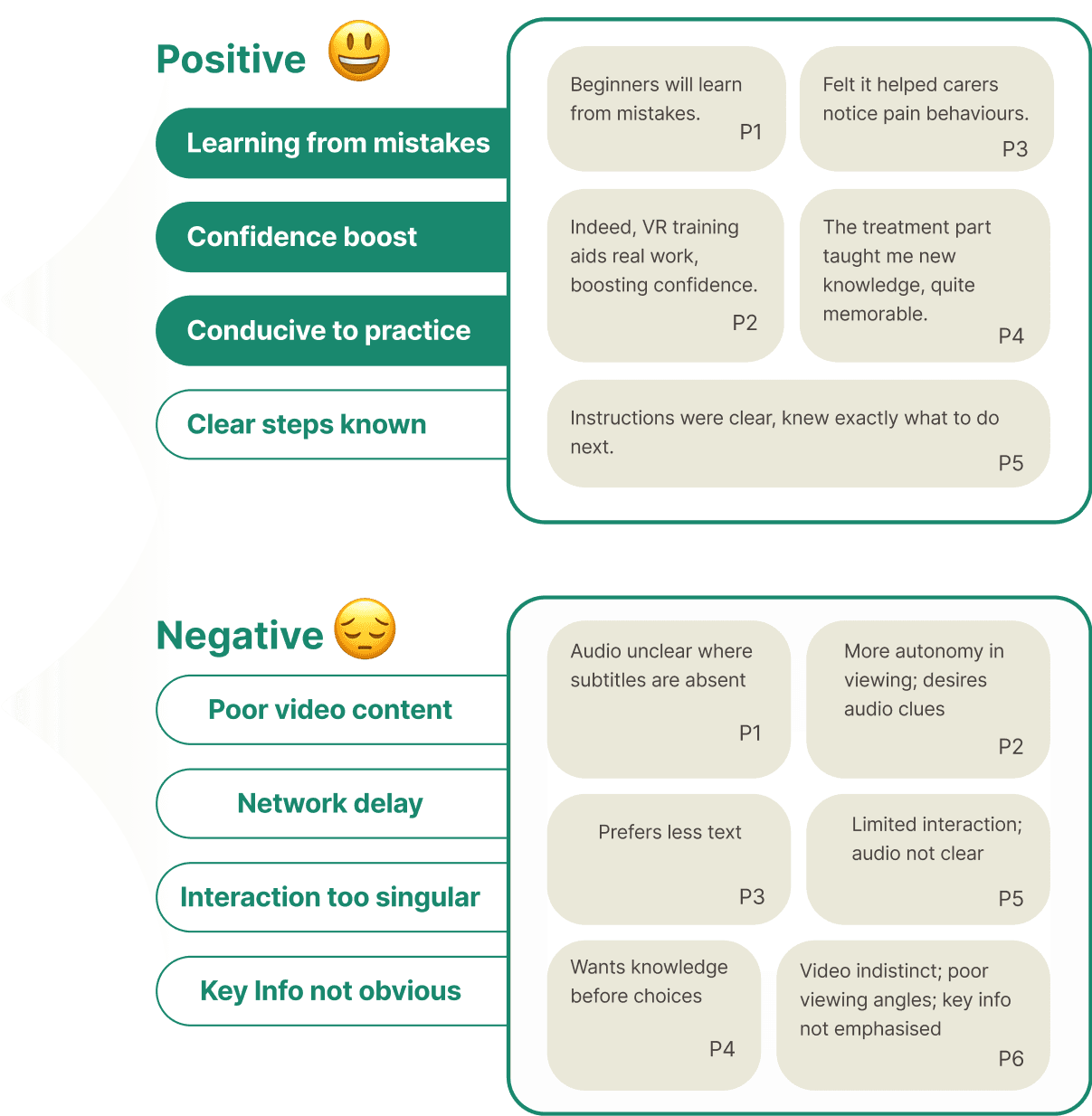
SUS & USE Scorecard
The presence of the VR experience was evaluated using the SUS calculator, yielding an acceptable score indicative of good presence. However, the usability of the VR, averaging at 68.75%, highlighted shortcomings in interaction, attributed to the utilisation of 360-degree videos and users' limited knowledge in the field, leading to errors.
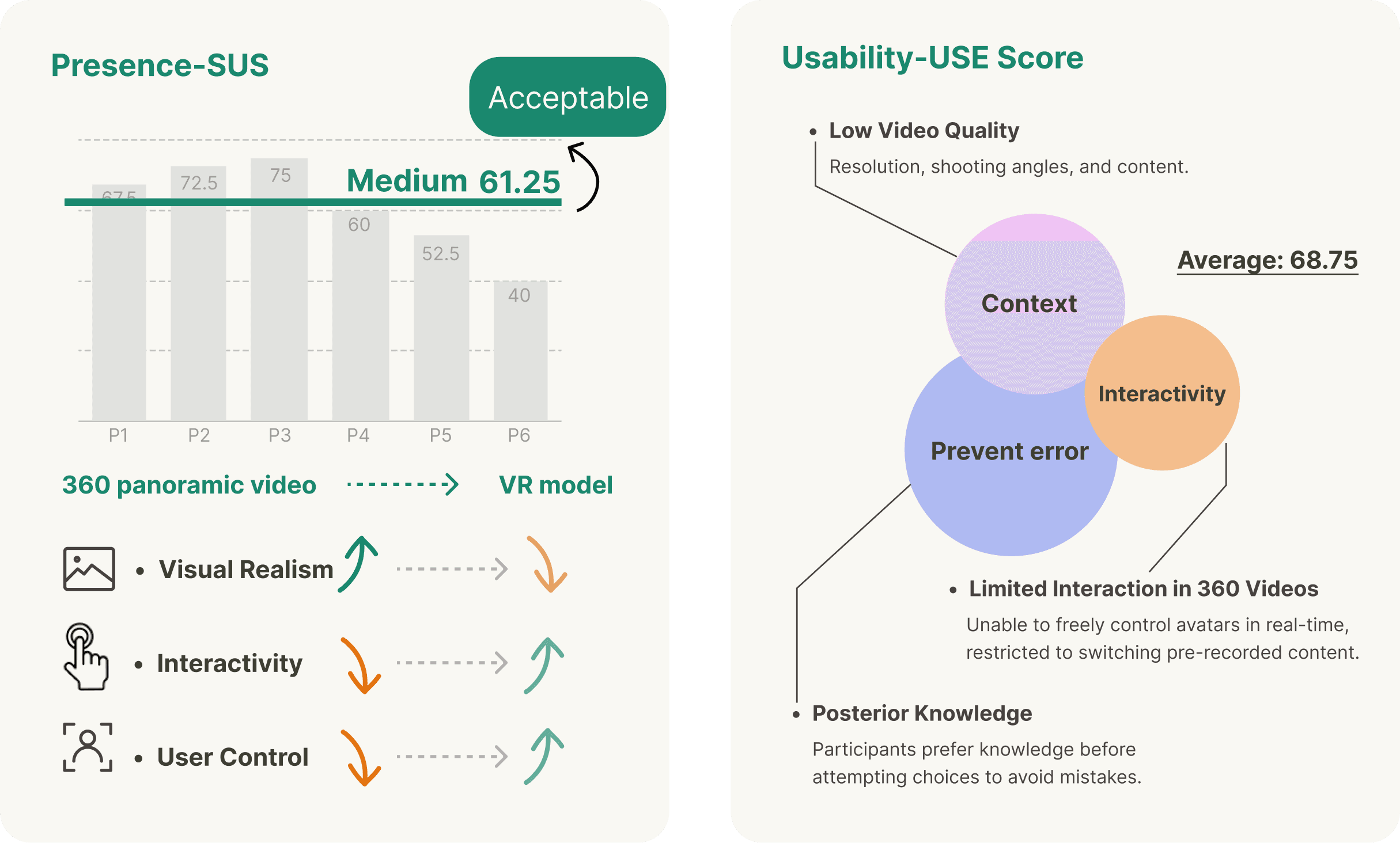
Test Questions Asked:

Iterations
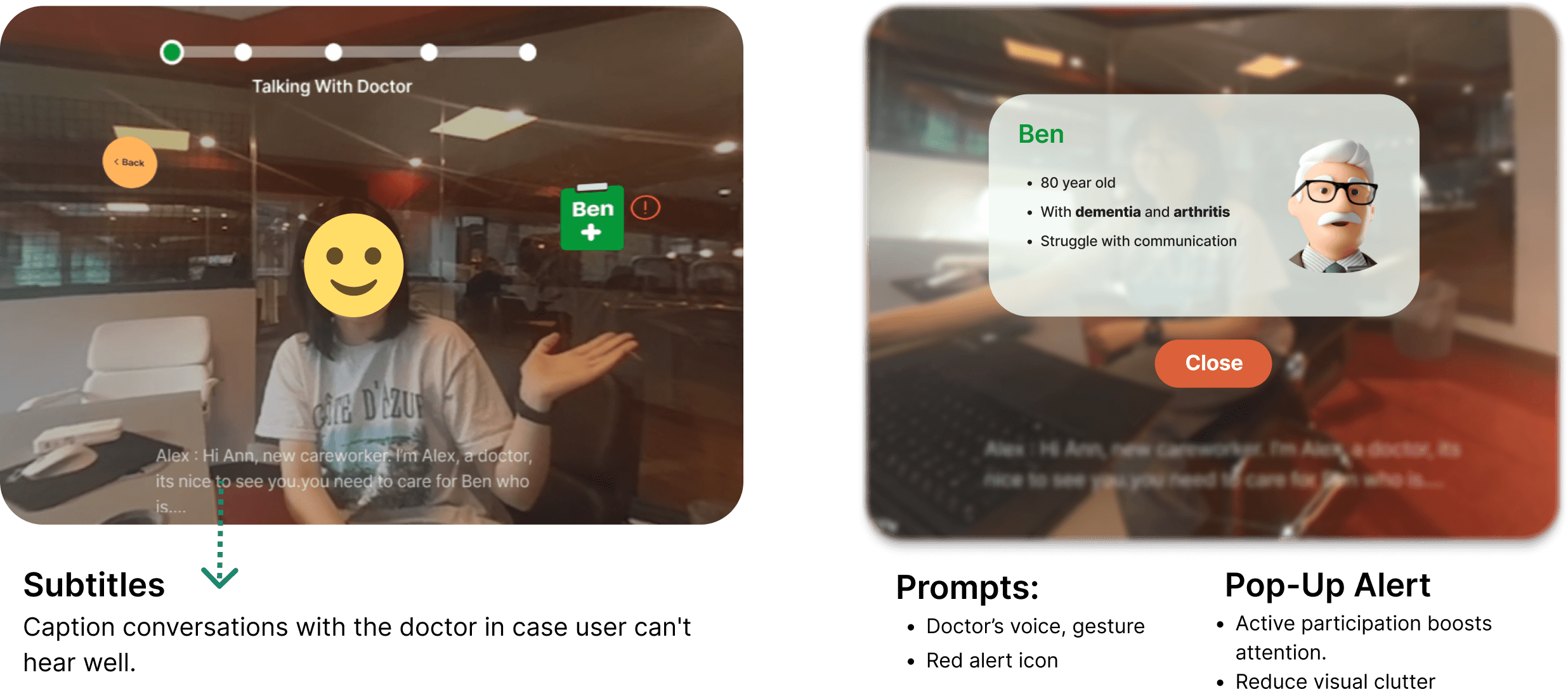
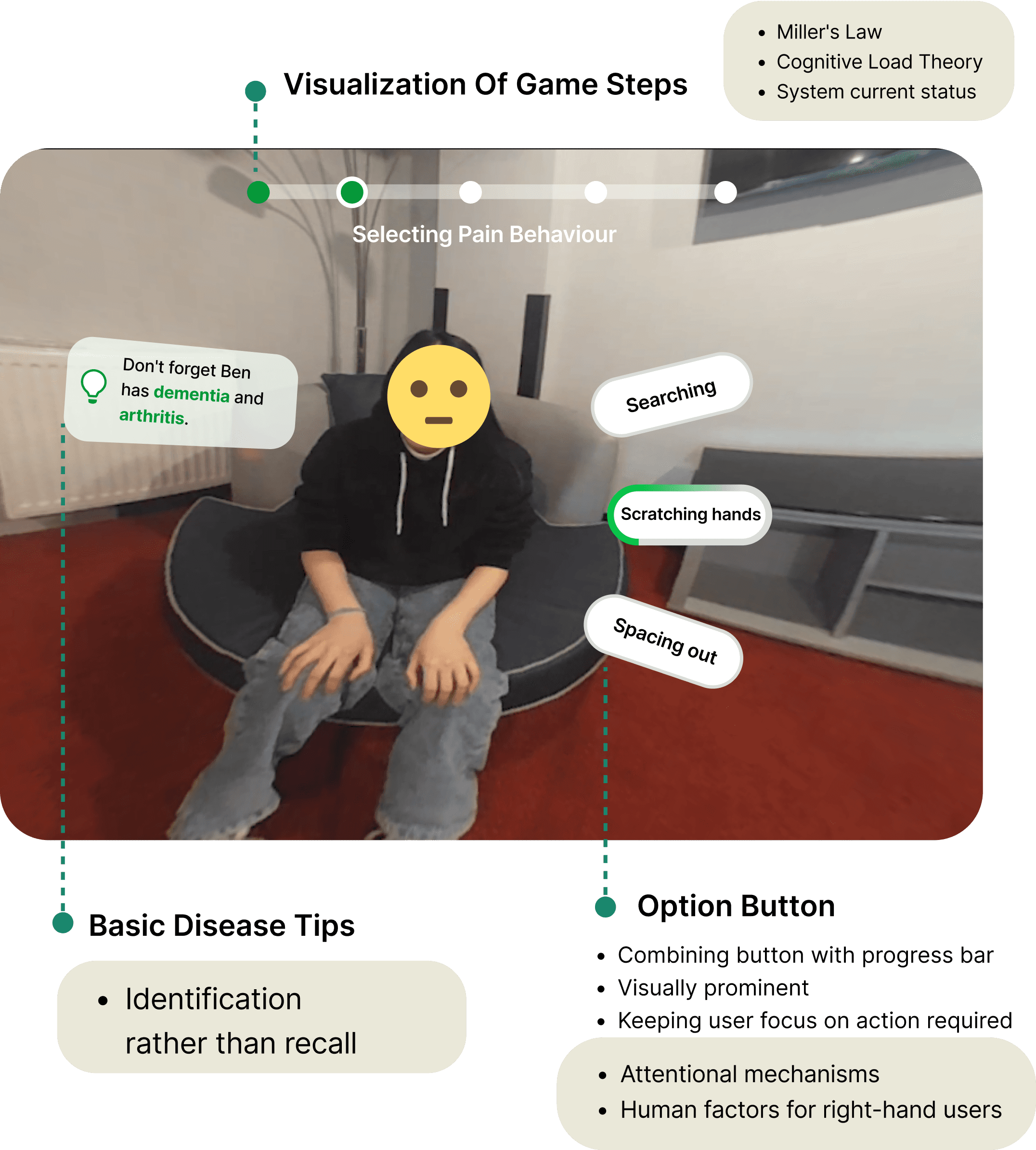
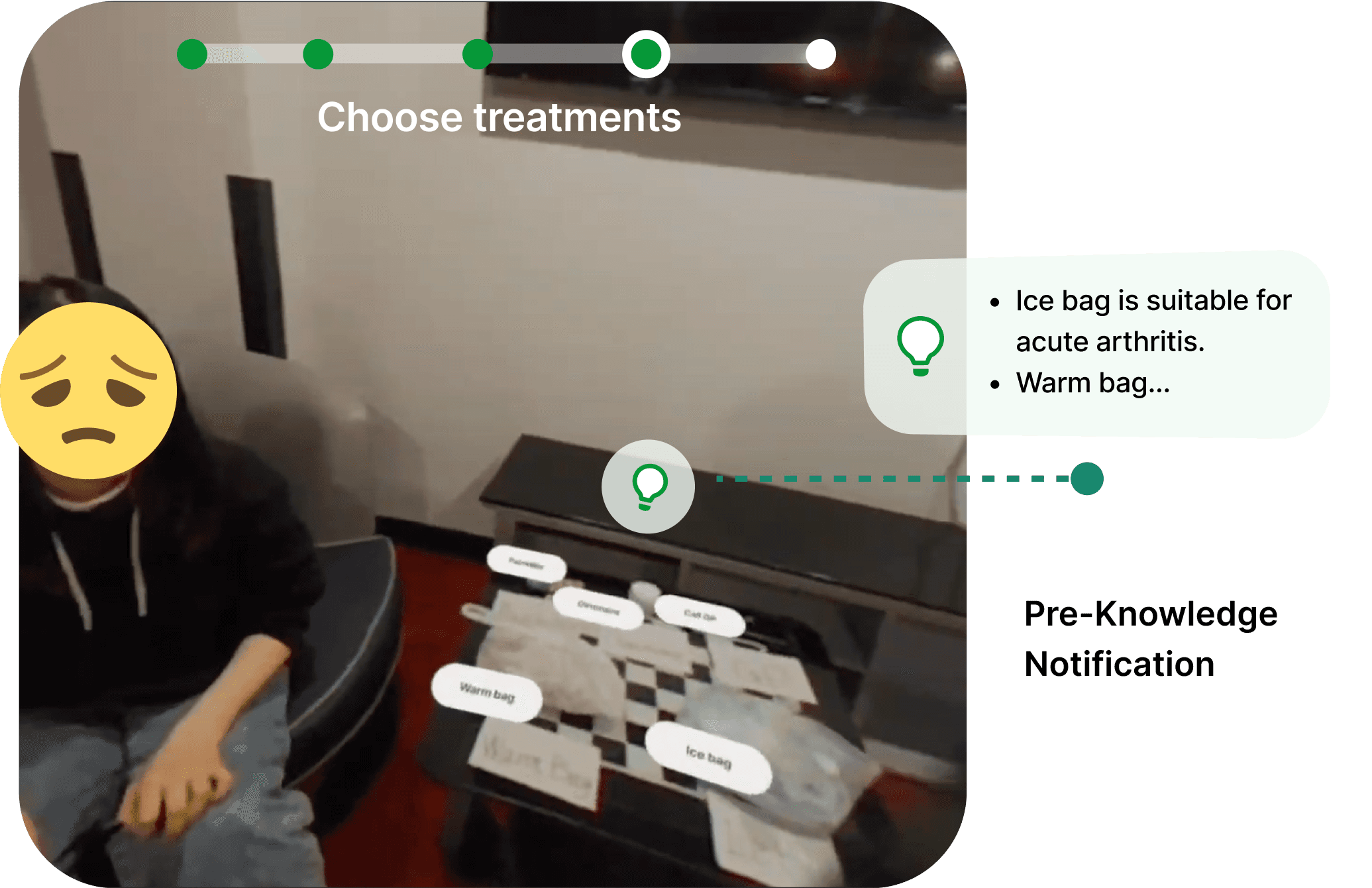

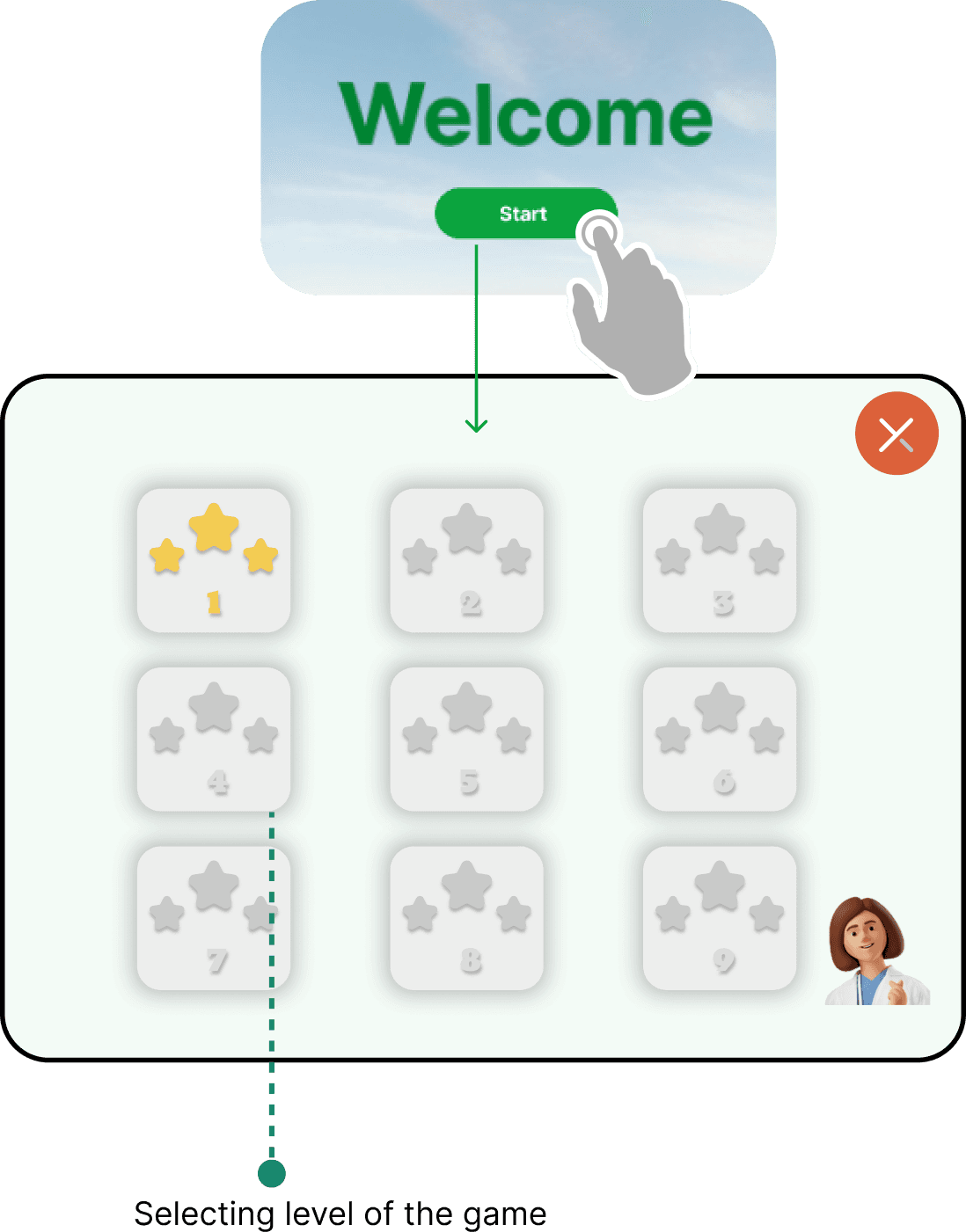
Ethics & Reflection
Ethics
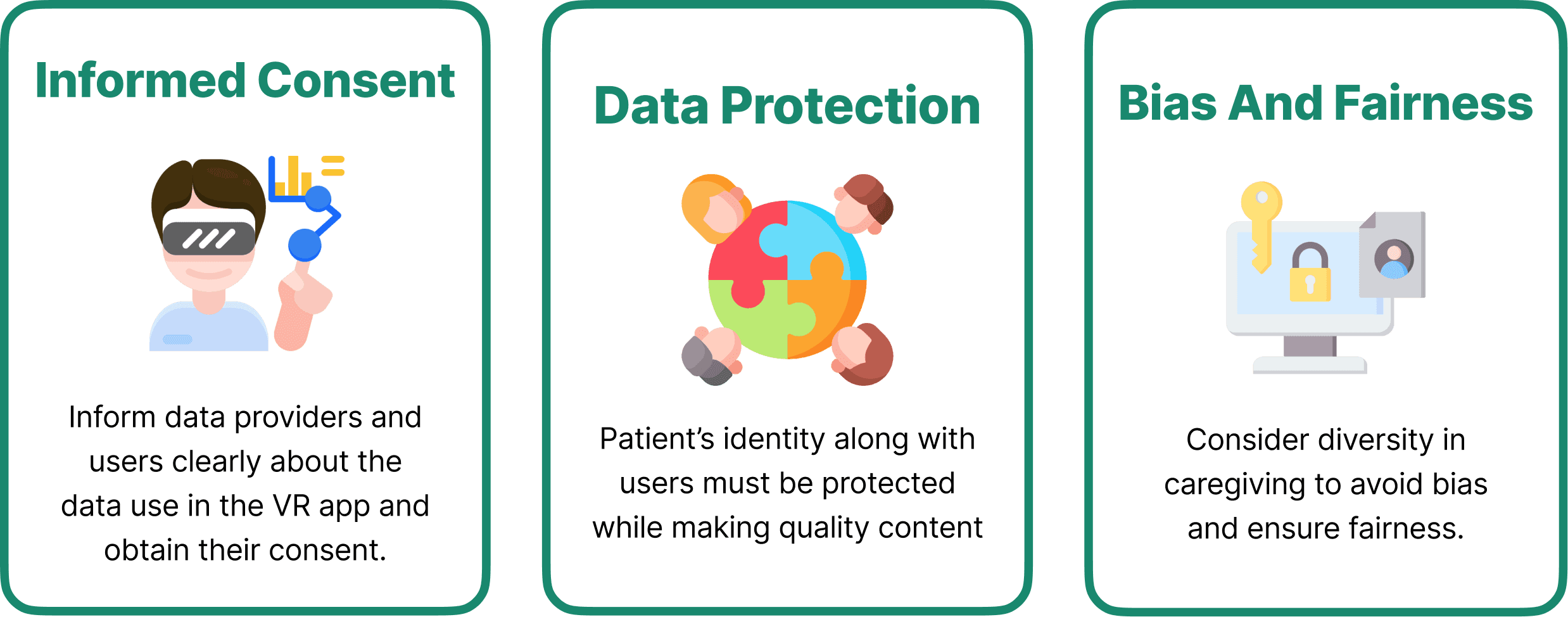
Reflection
Upon reflection, our prototype design using Spoke and 360-degree videos certainly expedited the prototyping process, but it posed limitations on testing certain functions. While this approach helped us move quickly, it also restricted our ability to thoroughly evaluate all interactive elements. Moreover, the quality of the video content we used during testing wasn't up to par, which likely skewed our results somewhat. As for participant recruitment, we didn't quite hit the mark with our selection (getting touch with real care workers due to ethical concerns), which may have impacted the accuracy of the feedback we received. We focused heavily on interaction logic during testing, but perhaps we didn't give enough attention to the tool's core strength—its data content. Looking ahead, it's clear that we need to refine our testing strategies to ensure we're evaluating all aspects of the tool effectively.
Individual Reflection:
Working with a diverse group of individuals, including members who spoke different languages, was a refreshing experience for me. Despite the language barrier, we collaborated effectively, sharing ideas, iterating on concepts, and providing constructive feedback to one another. Whenever misunderstandings arose, we utilised tools like Google Translate to ensure clear communication. Overall, the project provided a valuable opportunity for knowledge exchange and growth, enriching my collaborative experience.
